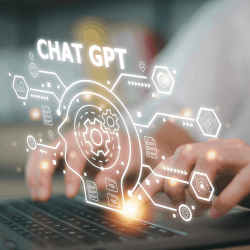
ChatGPT has taken the world by storm, becoming the fastest-growing consumer app in history after reaching 100 million users in just two months. That number continues to grow with the release of the ChatGPT iOS app, which puts the hyper-powerful chatbot into the hands of hundreds of millions more.
Unfortunately for educators, many of ChatGPT's power users are their own students—a fact that has upended the world of education like never before in just a few short months.
Thanks to its ability to solve problems, reason, and produce long-form content in seconds, ChatGPT has educators scrambling to cope with what has become the ultimate cheating tool of all time. AI experts already estimate that up to half of college students are likely to be cheating using the tool. According to an informal poll by the Stanford Daily, a significant number of students used ChatGPT on their final exams this year.
Even if or when they're not using it to cheat, educators still worry ChatGPT can be used to shortcut or invalidate the traditional assignments typically used to educate students. After all, the point of writing essays or working through take-home problems is to learn how to think and reason deeply about a subject. When ChatGPT can be used to overcome any cognitive obstacle, how does that impact the efficacy of typical curriculums?
The age of earning a doctorate using an app is finally upon us.
"The concerns are very legitimate," says Jonathan Choi, a professor of law at the University of Minnesota who specializes in law and artificial intelligence. "If a teacher assigns a take-home writing assignment to a student, the assumption has to be that the student will use ChatGPT."
The dilemma, to put it mildly, has thrown the world of education into a full-blown panic.
New York City public schools promptly banned ChatGPT. Popular plagiarism detector Turnitin quickly released ChatGPT detection features as part of its software suite used by thousands of educators. Teachers took matters into their own hands, failing students outright when they were caught using the tool.
The only problem? None of these knee-jerk reactions actually worked.
New York City public schools rescinded the ban on ChatGPT after outcry that it was both short-sighted and difficult to consistently enforce. Turnitin came under fire after a Washington Post investigation found that ChatGPT detection didn't work consistently and wrongly flagged innocent students. A teacher in Texas drew criticism when he failed several students after bungling the use of AI to detect ChatGPT-generated content.
"Detection tools aren't accurate enough to be relied upon, especially when imposing academic sanctions on students, and the detection tools can be defeated in a variety of ways," says Choi. "If instructors prohibit ChatGPT but have no means to enforce the prohibition, dishonest students who ignore the rule will have an advantage over honest students."
'If you can't beat 'em, join 'em.' That seems to be the strategy now being pursued by educators, some of whom have been embracing ChatGPT, large language models, and generative AI tools from the start.
Ethan Mollick, a professor at the Wharton School of the University of Pennsylvania, has drawn national attention for his wholehearted embrace of AI tools in the classroom. This year, students in Mollick's class are required to use tools like ChatGPT. And he has reinvented his curriculum from the ground up, even adopting an AI policy as part of his syllabus.
"The truth is, I probably couldn't have stopped them even if I didn't require it," Mollick told NPR. Now, his students use ChatGPT and other tools constantly while executing assignments, though they're required to disclose how they use AI in their work. He sees learning to use the tools—and overcoming their disadvantages—as an "emerging skill."
The tone in education circles appears to be changing as more educators adopt approaches like Mollick's. In fact, when Chancellor David Banks announced that New York City public schools' ban on ChatGPT would be reversed, his statement sounded notes that were downright contrite:
"The knee-jerk fear and risk overlooked the potential of generative AI to support students and teachers, as well as the reality that our students are participating in and will work in a world where understanding generative AI is crucial."
That doesn't mean adapting to the new technology will be easy, says Choi. Significant changes will need to be made quickly in the classroom—changes that will disrupt business as usual for many educators.
"Educators need to either test students in an environment where access to ChatGPT can be controlled (e.g., oral exams or proctored exams), or they need to accept that students will use ChatGPT and adapt their assignments and tests accordingly," he says.
Logan Kugler is a freelance technology writer based in Tampa, FL, USA. He has written for over 60 major publications.



Join the Discussion (0)
Become a Member or Sign In to Post a Comment